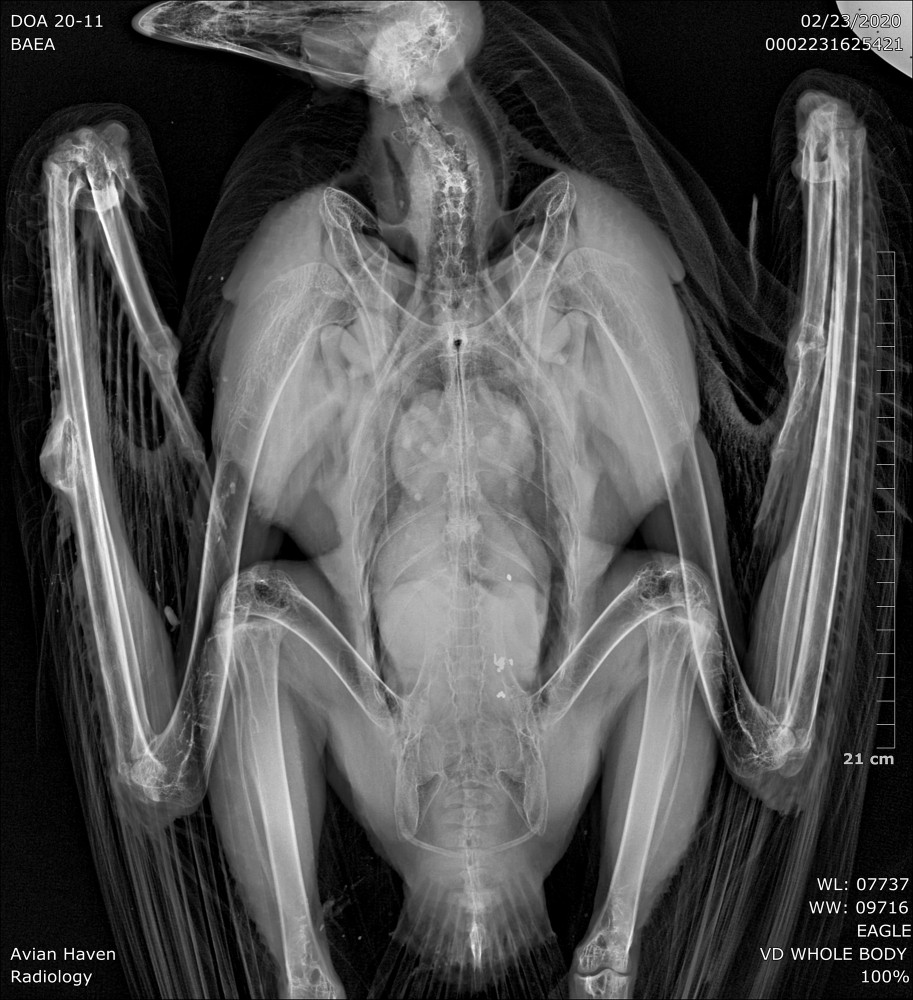
From bald eagles to black bears to red foxes, many of the most iconic northeastern animals scavenge the remains of big game, leaving them vulnerable to consuming fragments of toxic lead ammunition. Seeking to understand this issue, a team of researchers from Cornell University’s Wildlife Health Lab and the New York State Department of Environmental Conservation set out to answer two questions. First, which species are most at risk from lead ammunition in hunting remains? And which species should wildlife managers monitor to track the impact of lead ammunition on scavenger health? After reviewing the evidence, they found the top answer to both questions was the same: bald eagles.
Lead is hazardous to both humans and wildlife, and regulations prevent the metal from being added to many products, including paint, plumbing, and gasoline. Still, there are no widespread regulations on the use of lead ammunition in big game hunting, and it remains a popular choice among deer hunters, although some use alternatives such as copper bullets. Previous research has shown that lead ammunition poses a major hazard to scavengers. Lead poisoning is the primary factor leading endangered California condor populations to decline, and one study found that nearly 40 percent of surveyed bald eagles had toxic levels of lead in their systems.
This previous work is built upon in the new study, “Vulnerability to Lead Toxicosis and Bioindicator Utility of Deer Scavengers in New York,” published in August 2024 in The Journal of Wildlife Management. The study presents a thorough list of white-tailed deer scavengers in New York State and provides valuable insight into how hunting practices impact northeastern species.
To conduct the study, the research team asked outdoor enthusiasts to send images from game cameras showing wildlife in frame with white-tailed deer carcasses or gut piles. Researchers analyzed these images to determine which creatures were scavenging and which were just passing through. In total, community members sent in an impressive 159 images containing 31 scavenger species.
To get a sense of which animals are the most vulnerable to lead poisoning from scavenging and which are the most useful for monitoring the problem, the scientists calculated a vulnerability score and a utility score for each species. The vulnerability score considered factors such as how frequently members of the species are exposed to hunting remains, how sensitive they are to lead, and the likelihood that they will maintain healthy population levels when exposed to a threat. The researchers found that bald eagles had the highest vulnerability score of all the species surveyed, primarily due to their high exposure and threatened status in New York. After bald eagles, golden eagles, American goshawks, American crows, and common ravens earned the highest vulnerability scores.
Scientists calculated utility scores in a similar way. They again considered each species’ exposure and sensitivity, but this time they also looked at how easy it is to collect the species for monitoring and the amount of data there is on how the species responds to lead. Considering all these factors together, they again found bald eagles at the top, closely followed by the American goshawk, red-tailed hawk, and great horned owl.
What does this mean for conservation? Knowing which species are most vulnerable allows land stewards to carefully monitor the health of these populations and to watch for signs of lead poisoning. At the same time, conservationists can draw on the utility scores calculated in the study to make decisions about which species to include in surveillance programs. Importantly, this study, made possible by a collaboration between scientists and community members, helps inform ongoing conversations about using lead ammunition in big game hunting.

